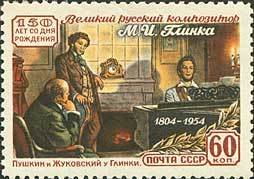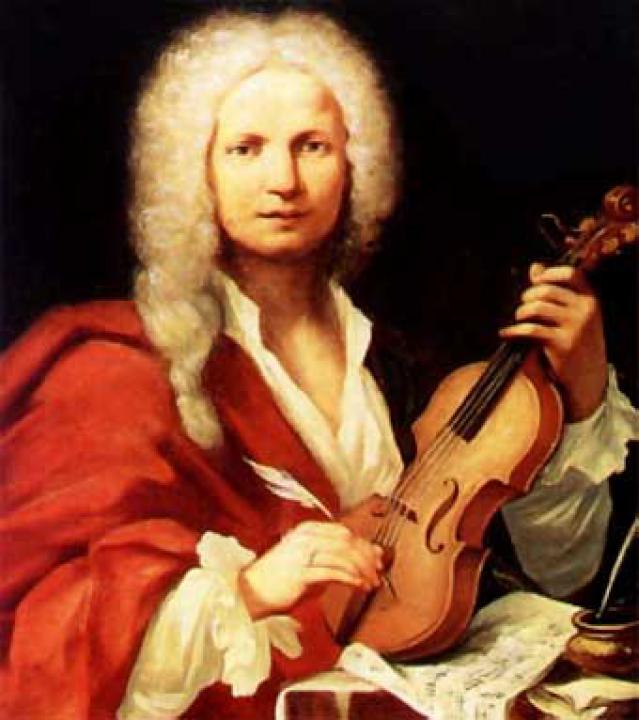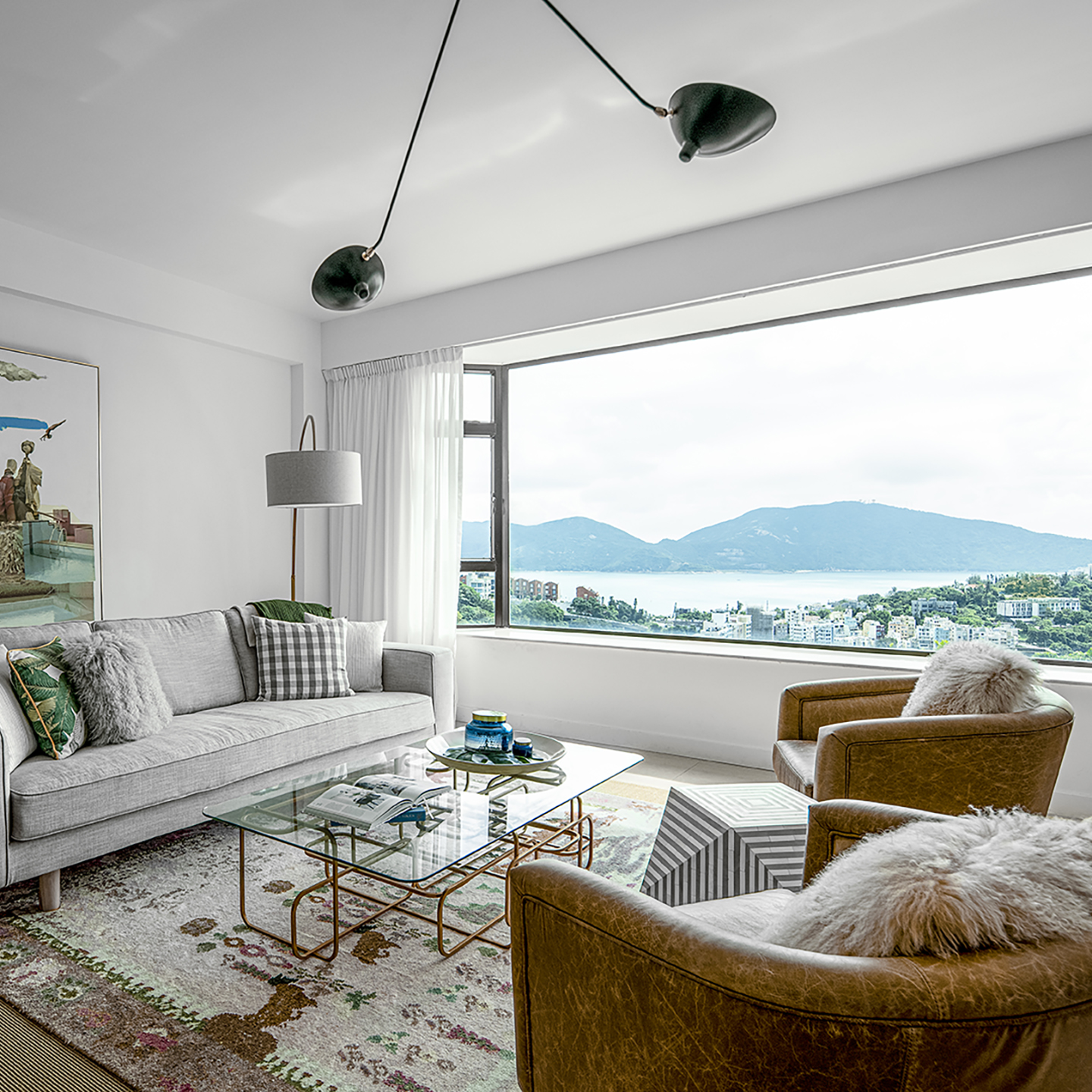Stamp: Glinka playing for Alexander Pushkin and Vasily Zhukovsky (Soviet Union, USSR 1954)
Glinka playing for Alexander Pushkin and Vasily Zhukovsky (Soviet Union, USSR 1954)
26 July (Soviet Union, USSR ) within release 150th birthday of Mikhail Ivanovich Glinka goes into circulation Stamp Glinka playing for Alexander Pushkin and Vasily Zhukovsky face value 60 Russian kopek
| Stamp Glinka playing for Alexander Pushkin and Vasily Zhukovsky in catalogues | |
|---|---|
| Michel: | Mi:SU 1726 |
Stamp is vertical format.
Mikhail Ivanovich Glinka (Russian: Михаи́л Ива́нович Гли́нка) (June 1 [O.S. May 20] 1804 – February 15 [O.S. February 3] 1857), was the first Russian composer to gain wide recognition within his own country, and is often regarded as the father of Russian classical music.[1] Glinka's compositions were an important influence on future Russian composers, notably the members of The Five, who took Glinka's lead and produced a distinctive Russian style of music.Also in the issue 150th birthday of Mikhail Ivanovich Glinka:
- Stamp - Mikhail I. Glinka (1804-1857), Russian composer face value 40;
- Stamp - Glinka playing for Alexander Pushkin and Vasily Zhukovsky face value 60;
- Stamp - Mikhail I. Glinka (1804-1857), Russian composer face value 40;
Stamp Glinka playing for Alexander Pushkin and Vasily Zhukovsky it reflects the thematic directions:
Famous People refers to the fame and public attention accorded by the mass media to individuals or groups or, occasionally, animals, but is usually applied to the persons or groups of people (celebrity couples, families, etc.) themselves who receive such a status of fame and attention. Celebrity status is often associated with wealth (commonly referred to as fame and fortune), while fame often provides opportunities to make money.
Music is an art form and cultural activity whose medium is sound organized in time. The common elements of music are pitch (which governs melody and harmony), rhythm (and its associated concepts tempo, meter, and articulation), dynamics (loudness and softness), and the sonic qualities of timbre and texture (which are sometimes termed the "color" of a musical sound). Different styles or types of music may emphasize, de-emphasize or omit some of these elements. Music is performed with a vast range of instruments and vocal techniques ranging from singing to rapping; there are solely instrumental pieces, solely vocal pieces (such as songs without instrumental accompaniment) and pieces that combine singing and instruments. The word derives from Greek μουσική (mousike; "art of the Muses"). In its most general form, the activities describing music as an art form or cultural activity include the creation of works of music (songs, tunes, symphonies, and so on), the criticism of music, the study of the history of music, and the aesthetic examination of music. Ancient Greek and Indian philosophers defined music as tones ordered horizontally as melodies and vertically as harmonies. Common sayings such as "the harmony of the spheres" and "it is music to my ears" point to the notion that music is often ordered and pleasant to listen to.
A musical instrument is a device created or adapted to make musical sounds. In principle, any object that produces sound can be considered a musical instrument—it is through purpose that the object becomes a musical instrument. A person who plays a musical instrument is known as an instrumentalist. The history of musical instruments dates to the beginnings of human culture. Early musical instruments may have been used for rituals, such as a horn to signal success on the hunt, or a drum in a religious ceremony. Cultures eventually developed composition and performance of melodies for entertainment. Musical instruments evolved in step with changing applications and technologies.
A composer is a person who writes music. The term is especially used to indicate composers of Western classical music, or those who are composers by occupation. Many composers are, or were, also skilled performers of music.
Interior design is the art and science of enhancing the interior of a building to achieve a healthier and more aesthetically pleasing environment for the people using the space. With a keen eye for detail and a creative flair, an interior designer is someone who plans, researches, coordinates, and manages such enhancement projects. Interior design is a multifaceted profession that includes conceptual development, space planning, site inspections, programming, research, communicating with the stakeholders of a project, construction management, and execution of the design.




